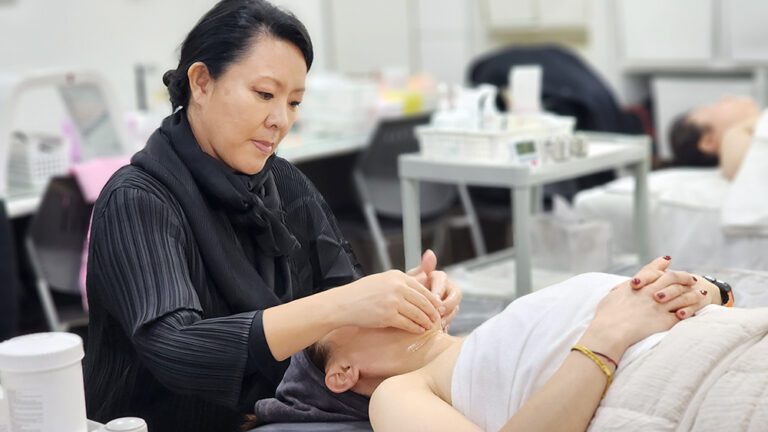
As we age, we often focus on skincare for the face and body, but one area that many overlook is the scalp. The health of your scalp plays a crucial role in maintaining youthful hair, promoting healthy hair growth, and even reducing visible signs of aging. At Korea Mikwang Beauty Academy, we believe that proper scalp care is not just a luxury but a necessity for anti-aging. In this blog post, we’ll explore the three essential steps in scalp care: scalp scaling, scalp massage, and microcurrent treatment—and why they are vital for combating the effects of aging.
Step 1: Scalp Scaling – Deep Cleansing for Rejuvenation
Scalp scaling is an essential first step in any effective scalp care routine. As we age, the scalp becomes more prone to the buildup of sebum, dead skin cells, and environmental pollutants, which can block hair follicles and impair hair growth. Scalp scaling involves using a specialized exfoliating treatment to remove this buildup, deeply cleansing the scalp and promoting circulation.
Why is this good for anti-aging? A clean, healthy scalp is the foundation for strong, vibrant hair. By removing debris and toxins, scalp scaling helps to revitalize the hair follicles, allowing nutrients and oxygen to nourish the hair roots. This process encourages the growth of thicker, healthier hair, and helps to prevent hair thinning or loss, which are common signs of aging.
Step 2: Scalp Massage – Enhancing Circulation for Vitality
After cleansing the scalp, a gentle yet effective scalp massage comes next. Scalp massage involves applying pressure to specific areas of the scalp to stimulate blood flow and promote relaxation. This simple, soothing technique has profound benefits for the scalp and the skin beneath it.
How does scalp massage help with anti-aging? As we age, blood circulation in the scalp decreases, which can result in poor hair growth and dull, lifeless hair. Scalp massage improves circulation, helping nutrients and oxygen reach the hair follicles more effectively. This increased blood flow promotes healthier hair growth, reduces stress (a major contributor to hair loss), and leaves the scalp feeling refreshed and revitalized. Additionally, regular scalp massage helps prevent tension in the scalp, which can contribute to premature aging signs like wrinkles or sagging.
Step 3: Microcurrent Treatment – A Non-Invasive Anti-Aging Solution
The third step in our anti-aging scalp care regimen at Korea Mikwang Beauty Academy is the use of microcurrent technology. Microcurrent therapy uses low-level electrical currents to stimulate the muscles and tissues beneath the skin, promoting toning, tightening, and rejuvenation.
Why is microcurrent beneficial for anti-aging? The application of microcurrents helps to tighten the skin on the scalp, improve elasticity, and reduce the appearance of fine lines or sagging. This process stimulates collagen production, which is crucial for maintaining a youthful, firm appearance. In the context of the scalp, microcurrent therapy supports hair follicle health, leading to stronger, more resilient hair that resists the aging process.
Why Enroll in Korea Mikwang Beauty Academy’s Scalp Care Course?
At Korea Mikwang Beauty Academy, we are dedicated to providing advanced beauty treatments that focus on natural rejuvenation and anti-aging. Our scalp care course offers you the opportunity to learn the three powerful steps—scalp scaling, scalp massage, and microcurrent—that are essential for maintaining a youthful, healthy scalp.
Not only will you gain hands-on experience in these anti-aging techniques, but you will also receive expert guidance from our experienced instructors, who are passionate about helping you master the art of scalp care.
Don’t wait for the signs of aging to take a toll on your hair and scalp—start your journey toward rejuvenation today! Enroll in Korea Mikwang Beauty Academy’s Scalp Care Course and empower yourself with the knowledge and skills to enhance your clients’ beauty and well-being. We look forward to helping you achieve professional mastery in scalp care for anti-aging.






